_We may earn revenue from the products available on this page and participate in affiliate programs. Learn more ›
_
Dangerous game is any animal that can shoot back, so to speak. Beasts that can kill you range in size from leopards, at 150 pounds, up through grizzlies at 600, to elephants at 12,000. Degree of danger is not determined by size or appearance. I know four professional hunters who have been chewed by leopards, and the same number who have been killed, or nearly killed, by elephants.
What Makes a Good Dangerous-Game Rifle?
.embed-container { position: relative; padding-bottom: 56.25%; height: 0; overflow: hidden; max-width: 100%; } .embed-container iframe, .embed-container object, .embed-container embed { position: absolute; top: 0; left: 0; width: 100%; height: 100%; }
A dangerous-game rifle must pack plenty of wallop and it must handle quickly. If you’ve seen the bear attack in The Revenant, it’s pretty accurate. Grizzlies are generally portrayed on screen as lumbering, but over a short distance they can outrun a horse and they come at you quick. Or you won’t know they are there at all until they’re hammering you. The PH I knew who was killed by an elephant never knew the cow was behind him until it was too late. His rifle was found with a round chambered but unfired.
Most of these encounters end in one or two shots. When I whined to a PH that my .416 was perfect except for lack of a dropped magazine that held four shots instead of three, he said:
“Why worry? All you ever get to use is two shots.”
He carried a double rifle.
And so, with the scent of fear in our nostrils, here we go.
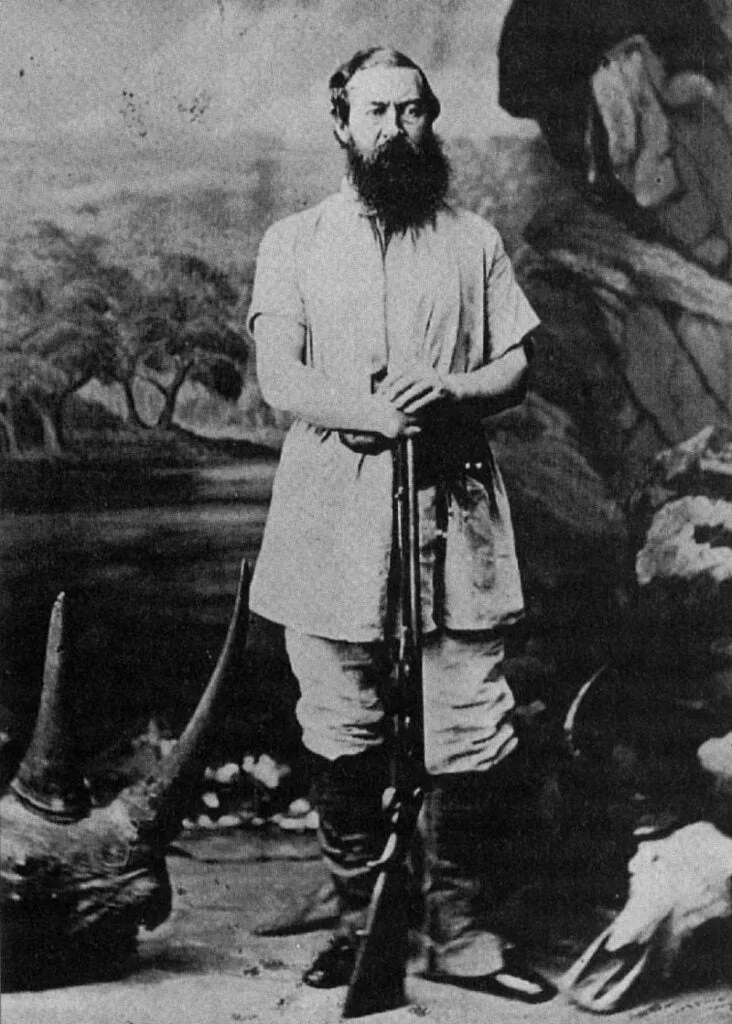
Sir Samuel Baker’s Holland & Holland single shot, “Baby”
Sir Samuel Baker, a famous big-game hunter and explorer.
Gun bearers who had to carry all 22 pounds of Baby called her Jenab al muftah, which is Arabic for “child of a cannon.” We know that Baby’s serial number was 1526, but about the rest of her there is some disagreement. Baby was supposedly a two bore, with a muzzle diameter of 1.326 inches. However, there’s at least one authority who says she was closer to a three bore. Bullet weights (Baby fired solid lead bullets and explosive lead bullets) are given as anywhere from 2,187 grains to 3,500 grains. Velocities ranged from 1,200 fps to 1,500 fps.
Baby was a creature of excess. She was so heavy that she had to be carried in relays. Her recoil was so awful that when Baker fired the brute, he was spun around in a complete circle and left with a nosebleed and dizzy spells. Baker did not use Baby very much. He estimated that in his entire association with her, he fired only 20 shots in anger. She was kept loaded for the most dire of encounters, but otherwise he used smaller rifles, and Baker claimed that her recoil “ruined him for life” as a shooter.
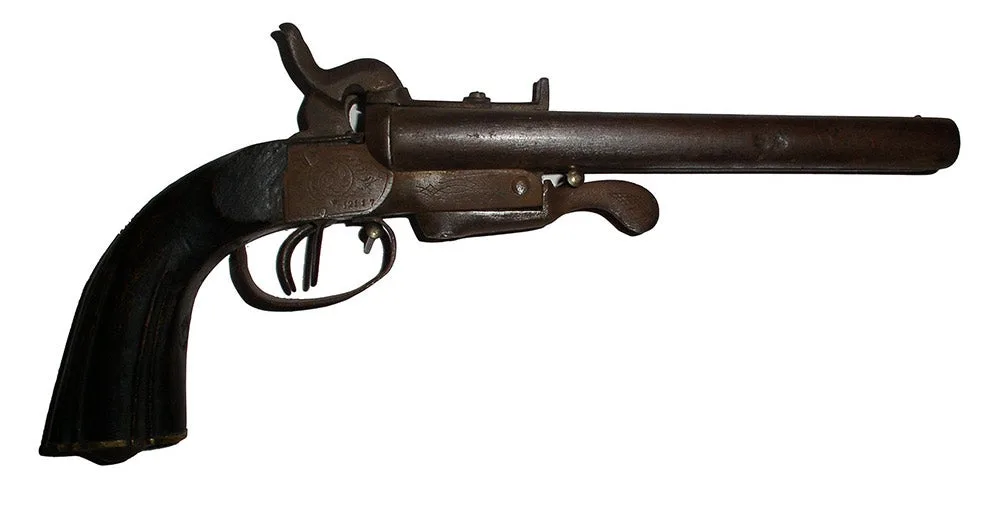
Howdah Pistol
Way back when, this pistol was the go-to self-defense gun for tigers in India.
Like Baby, the howdah pistol is a relic and a reminder of the days when the sun never set on the British Empire. Back when tigers were plentiful in India, redcoat officers and maharajahs hunted them from the backs of elephants, seated in a howdah, or large riding seat. This was great fun for all except the tiger, who would occasionally jump into the howdah to enquire why he had been shot.
The answer for visiting tigers was, at first, a flintlock pistol of .75 caliber or so, made with a heavily reinforced breech, and designed to deliver a crushing blow at very short range. This type of gun remained popular all the way to the end of the 1800s. But with the development of percussion ignition, and later metallic cartridges, the single-barrel howdah pistol was replaced by the double barrel, which was very often chambered for the .577 Snider rifle cartridge.
The howdah pistol found a second use as the British stole more and more real estate. Very often, redcoats found that their .450 service revolver was not powerful enough to stop irate indigenous personnel who fought with swords and spears and liked to get in close. So they turned to the howdah, which did the job nicely. Many of these guns were chambered for the .455 Martini service cartridge, and some were made with four revolving barrels.

The Sharps Big .50
The Big .50 was designed to drop dangerous game at long ranges.
Of the 10 guns here, this is the only one that was not designed for close-up shooting at belligerent animals. It was created to drop large, potentially dangerous animals at comparatively long range before they ever became belligerent.
After the Civil War, and the opening of the West, Generals Sherman and Sheridan saw that by exterminating the seemingly limitless herds of buffalo that they could at once empty the land for the use of farmers and ranchers and, as Sheridan quaintly put it, “reduce the Indian to beggary” and force the tribes onto reservations.
And so teams of buffalo hunters and skinners—usually one of the former and two or three of the latter—fanned out across the prairies and the slaughter began. It called for precise shooting at moderate ranges. Hit pte in the lungs with a big bullet and it would drop while the rest of the herd grazed peacefully.
The gun of choice for this was the Sharps .50—a sidehammer, falling-block single shot made to target standards. The standard load was a grease-grooved or paper-patched 473-grain lead bullet in front of 90 grains of black powder. But for true enthusiasts, there was a load with 100 grains, and one with 110 grains, and you could get bullets as heavy as 700 grains.
Sharps .50s were beautifully made, heavy, and often fitted with double-set triggers and vernier sights. In the hands of an expert, they were capable of astounding precision. At the Second Battle of Adobe Walls, buffalo hunter Billy Dixon killed an Indian at 1,538 yards. With shooting like this, within 15 years, the buffalo were gone.
Today, the tradition of the Big .50 lives on in rifles like the Barrett .50 BMG—a blow of crushing power, delivered with precision at long range.

The Rigby .416
The Rigby .416 was the rifle of choice for noted PH Harry Selby.
This is a paragon among dangerous-game guns. It’s the happy coincidence of a superlative rifle and a very nearly perfect cartridge. Rigby built its big bolt gun on the Magnum Mauser action, producing a rifle that was dead reliable, much lighter than a double, and much less expensive. The sizeable .416 cartridge, which was designed in 1911, shot 400-grain soft-noses and solids at just under 2,400 fps. John Taylor, who hunted (and poached) African game when it was limitless, and who wrote the book (literally) on the subject—African Rifles and Cartridges—raved about rifle and cartridge alike.
The .416 got a major boost at the outset because Rigby somehow persuaded the ammunition firm Kynoch, whose bullets could be counted on to fail a good deal of the time, to make strong, reliable slugs for the .416. Word got around very quickly.
Rigby’s masterpiece became famous, however, because it was Harry Selby’s dangerous-game rifle for 50 years. Selby was Robert Ruark’s PH on his first safari, and Ruark made both man and rifle famous.
Today, you can buy a brand-new .416 Rigby Mauser, built by Rigby, for $15,000, which is why you see so few of them in the hands of professional hunters. If you should happen to come by one, remember that it’s an iron-sighted rifle, and to mount a scope on it is an unnatural act.

The .460 Weatherby Mark V
This dangerous-gamer kicks with 100 foot-pounds of recoil.
For 29 years—from 1957, when it was announced, to 1988, when it was surpassed by the .700 Holland & Holland—the .460 Weatherby was the most powerful commercial cartridge available. It’s the .378 Weatherby necked up to .45, and it fires a 500-grain bullet at 2,700 fps from the Mark V’s standard 26-inch barrel. In comparison, the .458 Winchester, which is pretty much the benchmark for dangerous-game cartridges, shoots the same bullets at 2,050 fps.
I hunted with a PH named John Knowles who used a .460 as his backup gun. Knowles then had something like 30 years of experience behind him, and he said that it was the only rifle that would absolutely, positively, stop anything dead in its tracks.
The price you pay is recoil. I’ve shot .460s, and the kick is simply horrendous. The cartridge generates about 100 foot-pounds in the direction of your quivering shoulder, which is 120 percent greater than that of a .375 H&H.
From the 1950s until the 1970s, Weatherby stocked its .460s in screwbean mesquite, which is a nightmare to work with but very heavy, very strong, and quite beautiful. If you’re looking for a .460 and find one of these, you’ll have found a treasure. Eventually Weatherby gave up on mesquite and switched to French walnut.
The most painful .460 of all time belonged to arms historian Jac Weller, who had been an All-American tackle at Princeton and was a man of freakish strength. His .460 had a steel buttplate, and he used to shoot it for fun. Or what he called fun.
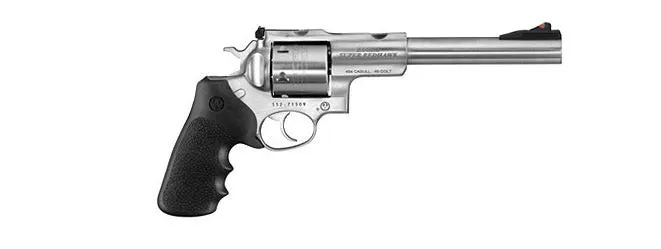
The Ruger Super Redhawk in .480 Ruger
This handgun is a common sight in bear country.
I’m not a believer in carrying a handgun as protection against dangerous game. Revolvers are much harder to hit with than rifles, and even the most potent pack far less punch. Nevertheless, there are places and situations where they are the ticket, and I believe the best one available is Ruger’s big double action, chambered for the vastly underrated .480.
The Super Redhawk, with a 7.5-inch barrel, is big, but not so big that you’ll be inclined to leave it at the cabin and have a brown bear eat your leg as a result. It’s a revolver of immense strength. “A beast,” a gunsmith friend of mine calls it.
The .480 Ruger (actually .475) was developed by Hornady in 2003, and fires 325-grain bullets at 1,350 fps—far more horsepower than the .44 Magnum, but at comparatively mild pressures, so it lacks the wrist-cracking recoil of the hideous .454 Casull.
This is a gun for bear country. In most close encounters of the ursine kind, you get only one shot. Here is the revolver from which to fire it.
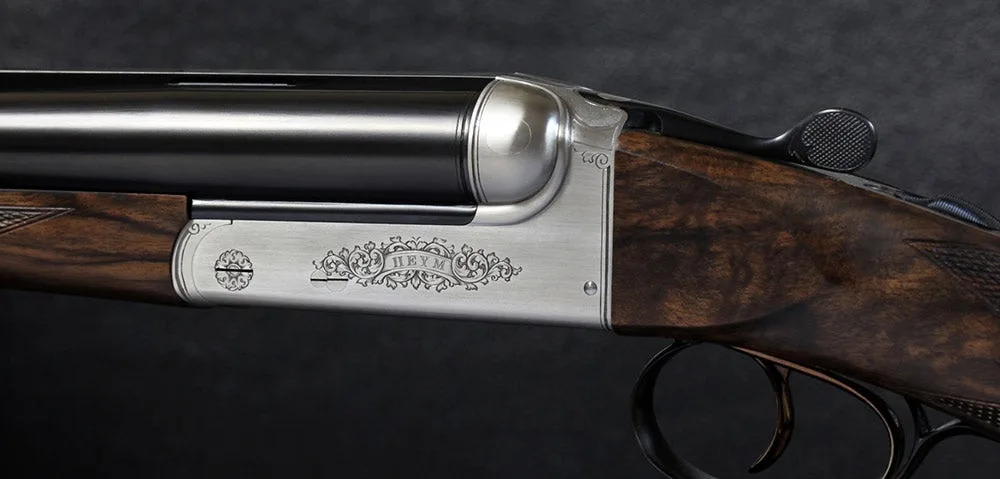
Double rifles excel for dangerous game because they give you the two fastest-aimed shots possible.
Heym Model 89B double rifle in .500 Nitro Express
Double rifles excel for dangerous game because they give you the two fastest-aimed shots possible.
Heym describes the 89B as “a proper British double rifle…made in Germany.” I include it here because PH Buzz Charlton, with whom I hunted in Zimbabwe in 2016, bet his life on one on a regular basis, and that’s good enough for me.
Double rifles give you the two fastest aimed shots in all of gundom. Despite that they’ve been around pretty much unchanged since the days of black powder, no one has invented anything quicker. A good one weighs a lot, but most of the weight lies between your hands, so it’s very quick to get on target, and the recoil from the hellish cartridges they chamber is not excessive.
The .500 Nitro Express is another ageless wonder. Originally designed for black powder, it was switched to cordite some time in the 1890s, and later on to modern smokeless. It fires a 520-grain bullet at 2,150 fps, and is guaranteed to make a believer out of whatever you shoot with it. Buzz used a .500 NE, and swore by it, and the only other cartridge I’d consider is the .470 NE.
The 89B is, like all double rifles, labor intensive. Regulating the two barrels to shoot to the same point of impact is time-consuming and requires experience, patience, and skill. That’s why they cost a lot. Heym builds 89Bs to order. You can get one plain, or very, very fancy, but either way it will be a highly functional, reliable, accurate rifle. Look on the bright side: A plain-vanilla 89B is about one quarter the price of a London Best double.

Winchester Model 70 in .458 Winchester
Compared to other dangerous-game guns of the ’50s, the .458 Model 70 was a bargain.
The early 1950s saw a boom in African safari–going. Air travel replaced ocean liners, safaris cost a small fraction of what they do today, and there was game beyond belief. Hollywood made (bad) safari movies, and Robert Ruark wrote Horn of the Hunter and Something of Value. Quicker than you could say “Letti hapa ginni a m’bele, pese pese” (“Get me a gin on the rocks right now!” in Swahili), the whole thing went through the roof.
Winchester was not insensible to of all this, and decided that what America needed was a reasonably priced African-dangerous-game rifle, and so the Big Red W modified its peerless Model 70 bolt action, adding a heavy, 25-inch barrel and good iron sights. It was known as the Model 70 Super Grade African, and it cost around $295 in the late 1950s, which was not cheap for an American rifle, but would not buy the bolt knob on a Rigby bolt action.
The .458 Winchester Magnum was designed to replicate the ballistics of the .470 Nitro Express—500 grains at 2,100 fps—which was, and is, one of the most highly regarded dangerous-game rounds. There were, however, problems. The claimed velocity was optimistic. Some .458 ammo was turning out only 1,900 fps. Wildcatters immediately jumped into the breech and designed cartridges such as the .458 Lott and .450 Ackley that filled the need for greater speed.
Despite this, the rifle and the ammunition were a raging success, and remain so today. It’s a guess, but I believe there are more .458 rifles (Winchester and otherwise) banging around Africa than anything else except the .375 H&H.
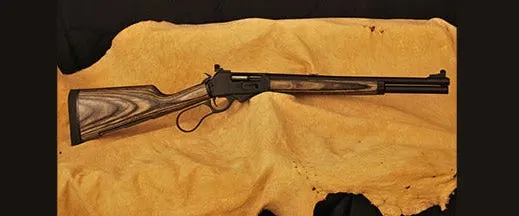
Brockman’s Super Guide Package Marlin .45/70 Model 1895 Conversion
This lever had everything you’d want from a dangerous-game gun: speed, accuracy, reliability, and power.
Before we get into this, I’m aware that there’s no shortage of gunsmiths offering Guide Gun conversions. I’m also aware that Marlin now has its own Custom Shop turning out Guide Guns. However, I owned a Brockman’s Super Guide for years, and shot it a ton, and can vouch for it.
So, in another triumph of old over new, the Model 1895 Marlin and the .45/70 cartridge (of 1873 vintage) can be customized to become one of the most effective dangerous-game combinations around: compact, reliable, fast-firing, accurate, and—with souped-up .45/70 loads and hard-lead bullets—powerful.
What you do is send Brockman a Marlin 1895 (one that was made in North Haven, Connecticut; the guns that were built after they moved are junk) and they will tear it apart, throw a lot of it away, re-do everything else, incorporate a package of wonderful new features, and send you a bill for $1,849.
If I were looking for a gun to pack every day in bear country, this is what I would take instead of a handgun. Specifically, I would use it with Buffalo Bore .45/70 Magnum, which is designed for modern lever guns, and shoots a 430-grain hard-cast lead bullet at around 1,900 fps, depending on barrel length. Until you see it, you can’t believe what a bullet like this can do.
It reminds me of the old rhyme: “Fear no bear what’er his size. But call on me. I’ll equalize.”
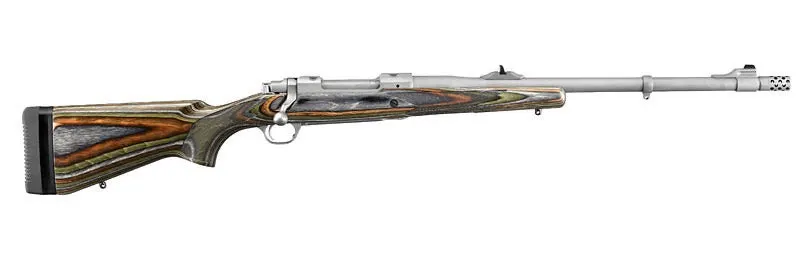
Ruger Guide Gun in .416 Ruger, 2013 vintage
This rifle is equipped for dangerous game in Alaska and Africa.
This unlovely but eminently practical firearm reminds me of the custom guns Alaska guides have built for themselves. The Ruger Guide Gun is almost carbine size, all stainless, and chambered for a number of potent cartridges, the most powerful of which is the .416 Ruger. This fat cartridge works through a .30/06-length action, but manages to duplicate the ballistics of the much larger .416 Rigby—400 grains at 2,400 fps.
The stock is laminated, hard as rock, and waterproof. The barrel is only 20 inches long, and the sling swivel ring is mounted on it so the rifle rides low on your shoulder. Ruger has provided excellent express-type sights and a muzzle brake that you can unscrew and replace with a dynamically matched weight so your point of impact won’t shift.
The Guide Gun is unique in that it’s perfect for dangerous game both in Alaska and Africa, despite diametrically different conditions. There are some damned smart people at Ruger.






